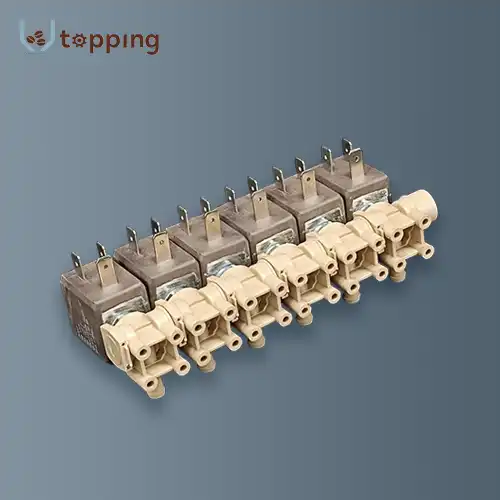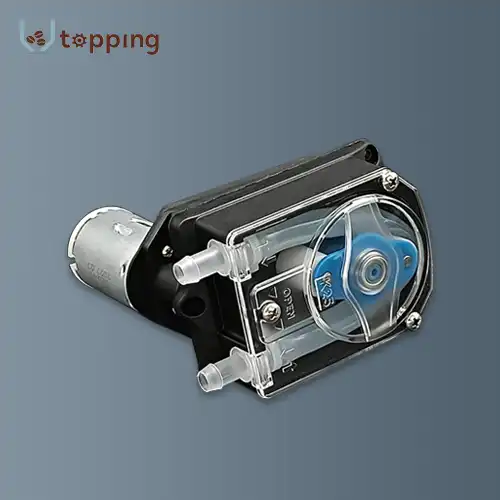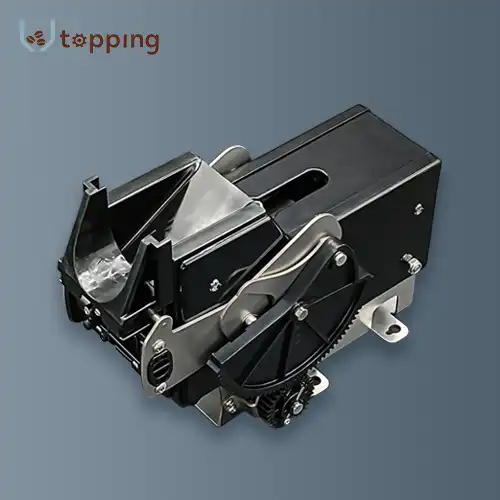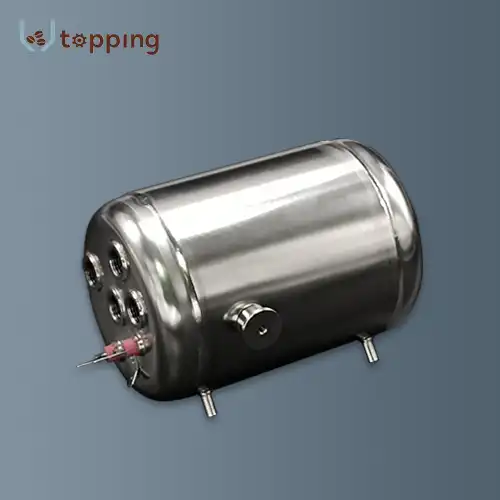How long does an in-line water filter last?
2024-12-24 16:35:12
The lifespan of an in-line water filter largely depends on its type and how it's used. Different filter types are designed to target specific contaminants and have varying capacities, which directly influence their longevity. Understanding these differences is crucial for maintaining optimal water quality in your home.
Activated carbon filters are among the most common types of in-line filters. These filters are excellent at removing chlorine, improving taste and odor, and reducing organic compounds. Typically, activated carbon filters can last anywhere from 6 to 12 months before requiring replacement. However, this timeframe can vary based on water quality and usage patterns.
Sediment filters, designed to remove particles like sand, dirt, and rust, often have a shorter lifespan. Depending on the level of sediment in your water supply, these filters may need replacement every 3 to 6 months. In areas with high sediment content, more frequent changes might be necessary to maintain filter efficiency.
Some advanced in-line filters combine multiple filtration technologies. For instance, a system might include both sediment and carbon filtration stages. In such cases, different components may have different lifespans, and it's important to follow the manufacturer's guidelines for each part.
Water Quality
The quality of your water supply plays a significant role in determining how long your in-line water filter will last. Water with higher levels of contaminants will put more strain on the filter, potentially shortening its lifespan.
Total Dissolved Solids (TDS) is a key indicator of water quality. Water with high TDS levels contains more minerals, sediment, and other particles that can quickly clog a filter. In areas with hard water (high mineral content), filters may need more frequent replacement due to mineral buildup.
Similarly, water with high levels of chlorine, heavy metals, or organic compounds will cause activated carbon filters to reach their capacity more quickly. In such cases, even high-quality filters might need replacement sooner than their standard recommended timeframe.
It's worth noting that seasonal changes can affect water quality. For example, spring runoff or heavy rains can increase sediment levels in some water supplies, potentially requiring more frequent filter changes during certain times of the year.
Water Usage
The amount of water your household uses is another crucial factor in determining how long an in-line water filter will last. Simply put, the more water that passes through the filter, the faster it will reach its capacity and require replacement.
A typical in-line filter is rated for a certain number of gallons. For instance, a filter might be designed to effectively treat 1,000 gallons of water. In a household that uses 300 gallons per month, this filter would theoretically last about three months. However, a household using 600 gallons per month would need to replace the same filter after only one and a half months.
It's important to consider all sources of water usage when estimating filter lifespan. This includes not just drinking water, but also water used for cooking, ice making, and potentially even showering or laundry, depending on where the in-line filter is installed in your home's water system.
Seasonal variations in water usage can also impact filter lifespan. Many households use more water during summer months for activities like gardening or filling swimming pools. This increased usage could necessitate more frequent filter changes during these periods.
Manufacturer Recommendations
While understanding the factors that influence filter lifespan is important, following the manufacturer's recommendations is crucial for ensuring optimal performance and maintaining water quality. Most manufacturers provide clear guidelines on when to replace their filters, typically ranging from 6 to 12 months.
These recommendations are based on extensive testing under various conditions and are designed to ensure that the filter continues to perform effectively. Even if your in-line water filter appears to be functioning well, replacing it according to the manufacturer's schedule helps prevent the risk of contaminant breakthrough, where the filter becomes saturated and begins to release trapped contaminants back into the water.
Many modern in-line filter systems come with built-in indicators or smart technology that can alert you when it's time for a replacement. These systems may track water usage, and time since the last change, or even monitor the filter's performance to provide accurate replacement notifications.
It's important to note that failing to replace filters as recommended can not only compromise water quality but may also void any warranty on the filtration system. Regular maintenance, including timely filter replacements, is key to protecting your investment and ensuring continued access to clean, safe water.
Visual and Functional Indicators
While following manufacturer recommendations is important, it's also beneficial to be aware of visual and functional indicators that might signal the need for a filter replacement. These signs can help you identify potential issues between scheduled replacements and ensure your water quality remains high.
One of the most noticeable signs that an in-line filter needs replacement is a reduction in water flow. As filters collect contaminants, they can become clogged, restricting the passage of water. If you notice that your faucet's flow has decreased significantly, it might be time to check your filter.
Changes in water taste or odor are another key indicator. If your water starts to taste different or develops an unpleasant odor, it could mean that your filter is no longer effectively removing contaminants. This is particularly common with activated carbon filters, which are primarily responsible for improving taste and odor.
Visual inspection of the filter itself can also provide valuable information. Many in-line filters have a clear housing that allows you to see the filter media. If you notice significant discoloration or visible buildup on the filter, it's likely time for a replacement.
In some cases, you might notice sediment or particles in your water that weren't present before. This could indicate that your filter has reached its capacity and is no longer effectively trapping these contaminants.
In-Line Water Filter Supplier
When choosing an in-line water filter, it's crucial to select a reputable supplier that offers high-quality, certified products. Topping Motor is one such supplier, providing in-line water filters that meet rigorous industry standards.
Topping Motor's in-line water filter boasts several important certifications, including NSF (National Sanitation Foundation), ANSI (American National Standards Institute), and FDA (Food and Drug Administration) approvals. These certifications ensure that the filters meet strict quality and safety standards for drinking water treatment units.
NSF/ANSI certifications are particularly important in the water treatment industry. They verify that a product has been tested by an independent third party and meets specific standards for contaminant reduction, structural integrity, and material safety. FDA approval further confirms that the materials used in the filter are safe for contact with drinking water.
In addition to these key certifications, Topping Motor's filters may hold other relevant approvals, depending on the specific model and intended use. These could include certifications from organizations like the Water Quality Association (WQA) or compliance with specific regional standards.
If you're in the market for a high-quality, certified in-line water filter and are considering manufacturers, Topping Motor invites you to reach out to them at sales@huan-tai.org. Their team can provide detailed information about their products, certifications, and how their filters can meet your specific water filtration needs.
References
1. Environmental Protection Agency. (2021). Drinking Water Treatability Database.
2. NSF International. (2021). NSF/ANSI 42: Drinking Water Treatment Units - Aesthetic Effects.
3. Water Quality Association. (2021). Water Treatment System Maintenance.
4. Centers for Disease Control and Prevention. (2020). Water Treatment.
5. American Water Works Association. (2021). Filtration.
Send Inquiry
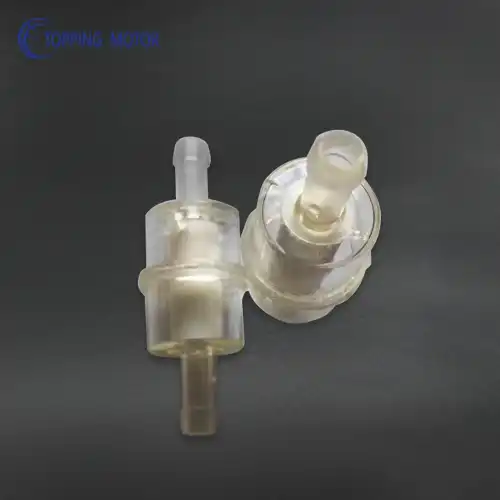

.webp)
